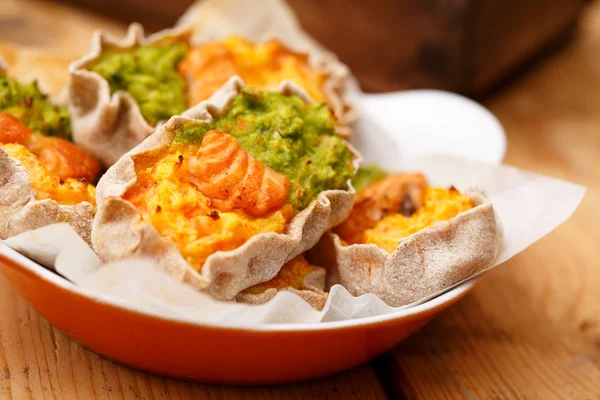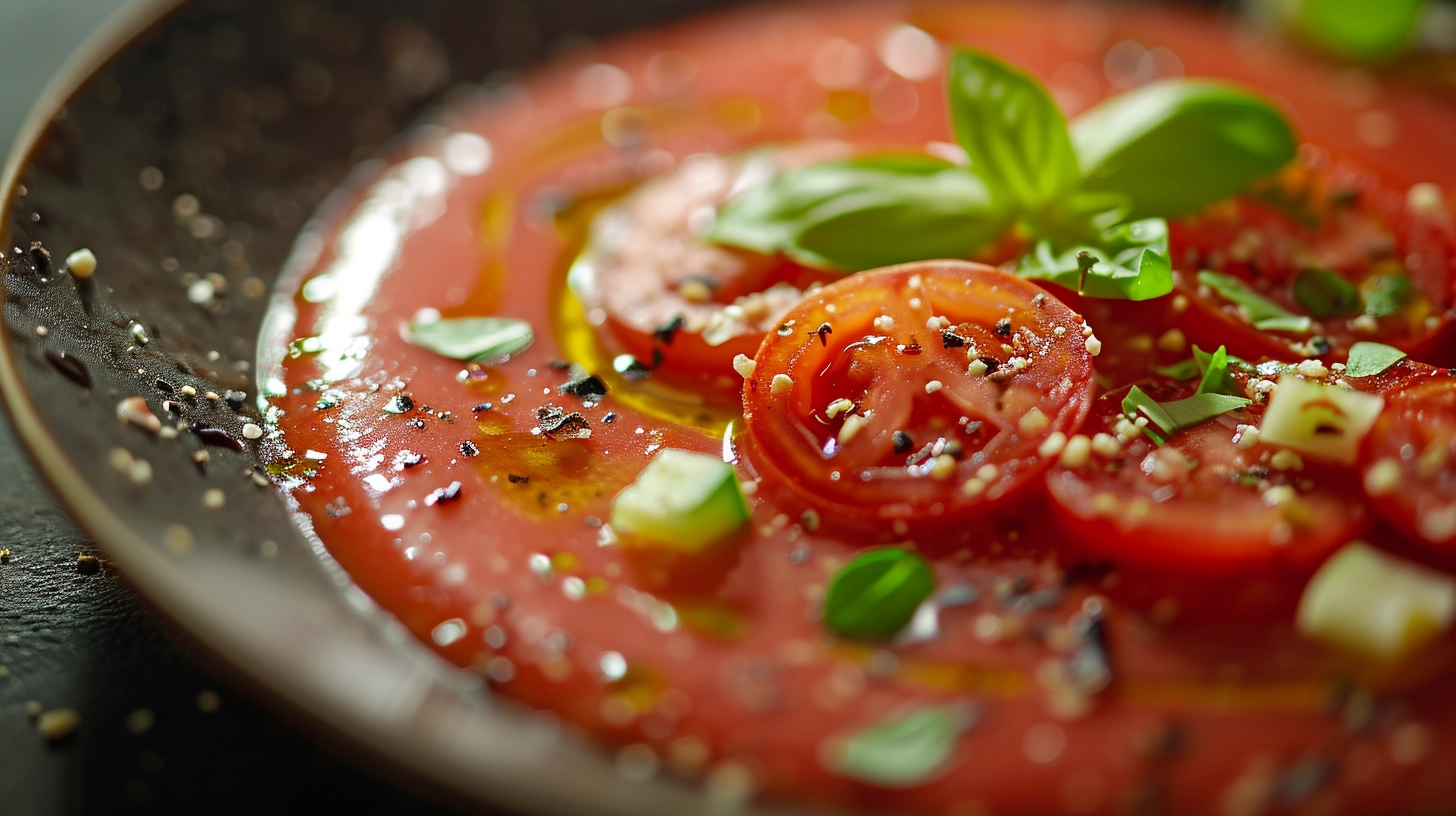Karelian Pies in the northern reaches of Europe, the Karelian region boasts a culinary gem that has captured the hearts and taste buds of locals and travelers alike: Karelian pies. These savory pastries, with their thin rye crusts and hearty fillings, offer a delicious glimpse into the rich culinary heritage of Finland and its neighboring countries. In this article, we embark on a journey to explore the history, ingredients, and cultural significance of Karelian pies.
Savoring Tradition: The Delectable World of Karelian Pies

A Taste of History:
Karelian pies have a long and storied history, dating back centuries to the rural communities of Finland, Karelia, and beyond. Originally crafted by farmers and peasants as a humble and practical meal, Karelian pies evolved into a beloved delicacy cherished for their simplicity, versatility, and rustic charm.
The Art of Pie-Making:
At the heart of Karelian pies lies the art of pie-making, a time-honored tradition passed down through generations. The process begins with the preparation of the dough, typically made from a combination of rye flour, water, and salt. The dough is rolled out thinly and shaped into small, oval pies, ready to be filled with an array of delicious ingredients.
Hearty Fillings:
Karelian pies are renowned for their diverse fillings, which vary depending on regional preferences and seasonal availability. Traditional fillings include rice porridge, mashed potatoes, carrots, and a variety of savory spreads such as egg butter, fish roe, or cheese. Each filling lends its own unique flavor and texture to the pies, creating a symphony of tastes with every bite.
Cultural Significance:
Beyond their culinary appeal, Karelian pies hold deep cultural significance for the people of Finland and Karelia. They are often served at special occasions and celebrations, such as weddings, birthdays, and holidays, where they symbolize hospitality, tradition, and community spirit. In Finnish folklore, Karelian pies are associated with tales of resilience, resourcefulness, and the simple pleasures of rural life.
Modern Variations:
While traditional Karelian pies remain beloved staples of Finnish cuisine, modern variations have emerged to cater to contemporary tastes and preferences. Chefs and home cooks alike experiment with new fillings, flavors, and presentations, adding a creative twist to this timeless classic while preserving its essence and authenticity.
Savoring the Experience:
Whether enjoyed as a simple snack or a centerpiece of a festive meal, Karelian pies offer a delightful culinary experience that transcends borders and generations. With each bite, diners are transported to the tranquil landscapes of the Karelian countryside, where time slows down, and the simple pleasures of life take center stage.
Karelian pies are more than just a food; they are a symbol of tradition, heritage, and culinary craftsmanship. From their humble origins in rural Finland to their status as a beloved national dish, Karelian pies continue to captivate hearts and palates around the world, inviting us to savor the rich tapestry of flavors and stories they embody. As we indulge in these delectable pastries, we celebrate the timeless allure of Karelian cuisine and the enduring legacy of its cherished culinary traditions.
Exploring the Delights and Considerations of Karelian Pies
Karelian pies, with their thin rye crusts and hearty fillings, have earned a cherished place in Finnish and Karelian cuisine. These traditional pastries offer a delightful combination of flavors and textures, but like any culinary creation, they come with their own set of advantages and considerations. In this article, we delve into the strengths and weaknesses of Karelian pies, celebrating their culinary merits while also acknowledging potential drawbacks.

Advantages:
- Cultural Heritage: Karelian pies are steeped in cultural heritage, representing centuries-old traditions and culinary craftsmanship. They serve as a symbol of Finnish and Karelian identity, embodying the rich history and traditions of the region.
- Versatility: One of the greatest strengths of Karelian pies lies in their versatility. They can be filled with a wide range of ingredients, from savory options like rice porridge and mashed potatoes to sweet variations with berry or fruit fillings, allowing for endless culinary creativity.
- Nutritional Value: Karelian pies are often made with whole-grain rye flour, which provides a good source of fiber and essential nutrients. Additionally, depending on the filling, they can be a satisfying and balanced meal option that combines carbohydrates, protein, and vegetables.
- Ease of Preparation: While making Karelian pies from scratch requires time and effort, they are relatively simple to prepare compared to more intricate pastries. The basic ingredients for the dough and fillings are readily available, making it accessible to home cooks of all skill levels.
Considerations:
- Labor-Intensive: Crafting Karelian pies from scratch can be labor-intensive, particularly the process of rolling out the thin rye dough and assembling the individual pies. This may deter some home cooks from attempting to make them or opt for store-bought alternatives.
- Skill and Technique: Achieving the perfect texture and consistency of the dough for Karelian pies requires skill and technique. Novice bakers may struggle with rolling out the dough thinly enough without tearing it or maintaining the desired shape of the pies.
- Storage and Shelf Life: Karelian are best enjoyed fresh, as their thin crusts tend to become soggy when stored for an extended period. This can pose challenges for batch cooking or storing leftovers, as reheating may compromise the texture and flavor of the pies.
- Availability Outside Finland: Outside of Finland and regions with significant Finnish and Karelian communities, Karelian pies may be challenging to find. This limits access to this culinary delight for those outside of its traditional cultural context.
Karelian pies offer a delightful culinary experience that celebrates tradition, flavor, and cultural heritage. While they boast numerous advantages, including versatility and nutritional value, they also come with considerations such as labor-intensive preparation and limited availability outside of their native regions. Despite these factors, Karelian pies depobos remain a beloved staple of Finnish and Karelian cuisine, cherished for their taste, history, and enduring appeal.
Savoring Tradition: A Review of Karelian Pies
Karelian pies, a beloved staple of Finnish and Karelian cuisine, have garnered a reputation for their simple yet satisfying flavors and rustic charm. These traditional pastries, characterized by their thin rye crusts and hearty fillings, offer a delightful culinary experience that celebrates the rich cultural heritage of the region. In this review, we explore the taste, texture, and overall dining experience of Karelian pies, celebrating their culinary merits and enduring appeal.

Taste:
The taste of Karelian pies is a delightful blend of earthy rye, savory fillings, and subtle seasoning. The thin rye crust provides a satisfying crunch, while the fillings, which can range from rice porridge to mashed potatoes or savory spreads, offer a comforting and flavorful contrast. Whether enjoyed plain or topped with a dollop of butter or creamy egg spread, each bite of a Karelian pie is a symphony of taste that evokes the essence of Finnish and Karelian cuisine.
Texture:
One of the defining characteristics of Karelian is their unique texture, which is achieved through the use of thin rye dough rolled out to perfection. The crust is thin and crisp, providing a delicate foundation for the hearty fillings within. Despite its thinness, the crust maintains its integrity, offering a satisfying bite that complements the creamy or savory fillings. The contrast between the crispy crust and the soft, comforting interior creates a delightful mouthfeel that is both comforting and satisfying.
Cultural Significance:
Beyond their culinary appeal, Karelian pies hold deep cultural significance for the people of Finland and Karelia. They are often served at special occasions and celebrations, where they symbolize hospitality, tradition, and community spirit. The act of making Karelian pies is a cherished tradition passed down through generations, fostering a sense of connection to the past and preserving the culinary heritage of the region.
Versatility:
One of the greatest strengths of Karelian is their versatility. While traditional fillings like rice porridge and mashed potatoes are popular choices, modern variations abound, offering a creative twist on this classic dish. Sweet fillings such as berry jams or fruit compotes provide a delicious alternative for those with a sweet tooth, while savory spreads like egg butter or fish roe appeal to more adventurous palates. This versatility ensures that Karelian can be enjoyed in a variety of settings, from casual snacks to formal gatherings.
Conclusion:
In conclusion, Karelian pies are a culinary delight that celebrates tradition, flavor, and cultural heritage. With their delightful taste, unique texture, and deep cultural significance, they offer a memorable dining experience that transcends borders and generations. Whether enjoyed as a simple snack or a centerpiece of a festive meal, Karelian continue to captivate hearts and palates around the world, inviting us to savor the rich tapestry of flavors and stories they embody.
Read More Article About “Exploding Head Syndrome: Understanding the Phenomenon 2024“




